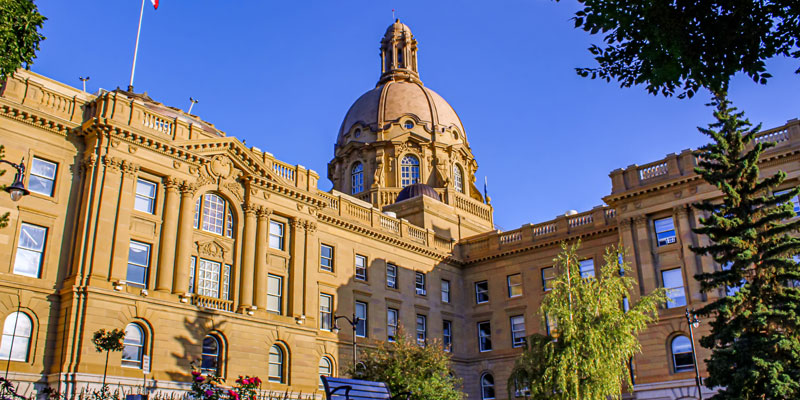Another credit downgrade highlights urgent need for spending reform in Alberta

The Government of Alberta’s credit rating was recently downgraded for the third time since December. The ratings agency, Fitch, noted that “additional policy responses” will be required to right the province’s finances. Credit downgrades aren’t merely a reflection on our poor fiscal situation, but also risk increasing the cost of provincial borrowing. Reforming and reducing spending to end the province’s decade plus run of nearly uninterrupted deficits should be a priority coming out of the recession.
While the pandemic and ensuing recession (combined with renewed instability in global oil markets) have taken a major toll on Alberta’s government finances, the provincial government has run deficits almost every year since 2008/09. This period included several years during which oil prices were high and the province was enjoying significant revenue from natural resource royalties.
The long string of deficits has taken a significant toll on the government’s balance sheet. Back in 2007/08, Edmonton had roughly $35 billion in net financial assets. This means that the province actually had more financial assets (such as the Heritage Fund) than it had debt. Alberta was the only province in such an enviable position.
The deterioration of Alberta’s finances since then has been remarkable. At the end of the 2019 fiscal year, the provincial government had more than $35 billion in net debt, meaning that the province’s debt now exceeded its financial assets by $35 billion, which is a $70 billion erosion in just over a decade. The current recession and response to COVID-19 will make this much worse.
The province’s debt accumulation is problematic for a number of reasons. Even if interest rates remain relatively low, the cost of servicing the province’s debt has increased from about $208 million in 2008/09 to more than $2 billion in 2019/20, and was projected to increase to nearly $3 billion in 2022/23 even before taking into account the impact of the current recession. To put this in context, the per person cost of servicing the provincial debt has risen from $61 in 2007/08 to $442 in 2018/19 and continues to climb. Directing five per cent of government revenue to debt-servicing leaves less money for important priorities such as health care and tax relief.
Some might argue that the best way to stem the flow of chronic deficits would be to raise taxes. The evidence indicates, however, that this approach could adversely affect the province’s economic recovery and future growth. Specifically, research by late Harvard economist Alberto Alesina shows that the economic harm from combating deficits via tax increases is much greater than the costs from spending reductions, and indeed, Alesina found a number of instances, including in Canada, where spending reductions facilitated stronger economic growth.
Given the precarious state of the provincial economy, tax increases could hinder economic recovery.
While reducing government spending is never easy, there is reason to believe that it can be done without jeopardizing public services. Consider neighbouring British Columbia. In 2003/04, Alberta and B.C. had essentially identical levels of per-person program spending. Thereafter, Alberta’s spending levels spiked relative to B.C. and have remained well above our neighbours while they enjoy similar or even better outcomes on many key health and education outcomes. This suggests that there is room to provide comparable services at lower costs, for instance, by bringing public-sector compensation into line with the private sector.
Alberta’s most recent credit downgrade serves as an important reminder that the province’s government finances are not on a sustainable path. Once we are on the other side of the pandemic, cabinet will have to begin making difficult decisions. Allowing the provincial debt to continually grow will lead to higher debt servicing costs and the need for deeper spending cuts down the road. The Kenney government should take decisive action soon to stave off the need for more dramatic reforms later.
Authors:
Subscribe to the Fraser Institute
Get the latest news from the Fraser Institute on the latest research studies, news and events.

